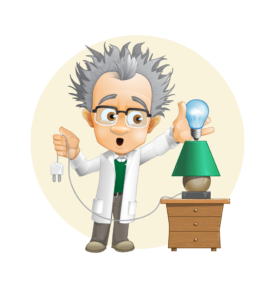For over a century, electric lighting systems have retained a persistent shape to their implementation as well as purpose. Since the advent of the first inefficient light bulbs, pretty much every innovation has been in improving the formula rather than building on it. Better wiring standards, better switches and breakers and of course innovations in brighter, more efficient light sources have been pretty much the entirety of luminaire innovation since Edison and Tesla.
With recent wide adoption of LED lighting, the trend toward improving a century-old core design seems to have reached its zenith. Yet, there’s still a long way for illumination to go. It’s simply a direction that will surprise some and vindicate others.
Enter the IoT (Internet of Things), more commonly referred to by the masses as “smart building/home” technology. A standard futurism trope since the advent of computers in the 1960s, the smart building concept proposes the next step of computer integration into human environments.
Utilizing the increasingly ubiquitous computer networks most occupied structures have, computers can directly control environmental systems (HVAC), appliances, security and of course illumination. While facilitating the classic voice control concept to invoke lighting levels, media playback and the like is pretty much perfected, that’s only half of the value IoT can offer.
The goal of most IoT technology designers is to implement smart control of the various building systems. The idea is for sensor inputs to enable automatic adjustments to temperature controls, lighting levels and so forth. This is a little trickier, unless designers decide to work smart, not hard.
The standard approach to implementing these sensors has been to distribute the controlling computers to each region, or to add yet another sub-infrastructure of wiring and mounting to install these sensors. Both of these options are possible, but they increase the intrusiveness of IoT implementation as well as the price and practicality of maintenance.
Here, we come to the new role of lighting in the coming age of IoT. Already thoroughly tested and perfected for over one hundred years, electric lighting systems provide an existing infrastructure thoroughly present throughout any given structure.
Lighting experts and forward-thinking IoT designers have begun to see the potential for the implementation of sensors directly into luminaire fixtures of all shapes and sizes, probably built into the LED components themselves.
It seems the realization of the long-awaited IoT revolution will not control lighting but be controlled by it.



